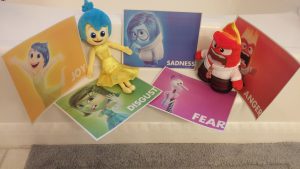Art | Culture | Parenting | Personal Growth | Theatre | Work | Writing
Inside Out: Emotions as Teaching Tools (my speech in Toastmasters worth sharing)
I gave this speech (below) in my Toastmasters group. Actually it was credited as two speeches from the Competent Communicator Manual – with emphasis on vocal variety and visual aids. The total time it took me to deliver this speech was almost fourteen minutes. I received such great feedback from the presentation and I had such a fun time putting it all together, that I thought it was worth sharing with others. We can all learn a little bit more about emotional intelligence. I’ve learned that emotions and feelings are great teaching tools. This film, Inside Out, has been incredible for opening up my perspective to emotional outbursts that my children have. I also think about the entire world around me and the way all people behave and react. If you want me to give this speech to your group or if you wish to borrow it for your own purposes, please contact me!
————————————————————————————
Inside Out: Emotions as Teaching Tools (Speech)
“You don’t tell me what to do!!” my oldest daughter yelled at my youngest one from the other end of the house. I was in the kitchen cleaning up and I could hear the tension build in the room even though I wasn’t in it.
A part of me wanted to go in their room and yell back. I’m admitting that I do have a tendency to react that way from time to time. But luckily I remembered the movie, Inside Out, and what it taught me instead.
Last year Disney put out this animated film (HOLD UP FILM DVD) about five characters who are emotions that live inside the head of an 11-year-old girl named Riley. The emotions are Anger, Sadness, Joy, Fear and Disgust.
Ever since I saw this film with my children, I’ve had a new perspective on our emotions. When I see outbursts or tantrums in my personal life or in the world around me, I see them as teaching tools to help us be better people.
Today I want to share my thoughts with you on how these emotions are great examples for viewing the world and achieving balance.
———————-
Meet Anger (HOLD UP ANGER IMAGE). My daughter was angry that night when I heard her yell at her sister. Anger is the first emotion I will discuss. He’s red. Fire and steam come from his head. He has a scowl. He never smiles. He blows up, literally.
We can relate, right? We have times in our lives when we are mad, for various reasons.
In children, it might be over something like a toy being taken away. For adults it could be a traffic jam and road rage on the commute to work. (Emphasize and Act out Anger)
There’s also deeply felt anger like injustice, inequality, bullying and blaming.
What good come come from anger? Why is anger important?
Anger in children is a chance to teach them about compassion and sharing.
For adults, seeing and witnessing anger may lead to a change for the better. Think about the civil rights movement, women’s voting, the justice system. These things would have never happened if it weren’t for people and groups getting mad, taking a stand and saying, “This isn’t right. I’m not taking this anymore!!” (Say LOUDLY)
Put Anger in the room with you. Figure out why he’s there and do what needs to be done to calm him down.
—————————–
Now let’s move on to Sadness. This is Sadness (HOLD UP SADNESS IMAGE)
Sadness is blue. She’s frumpy and dumpy. She talks reeeeeaalll slooooooww! She has to be dragged around, literally, in the film. She is not motivated to do anything.
In the movie Sadness is crying or talking about a moment when she or Riley, the little girl, cried. The other characters, especially Joy, always try to suppress Sadness. They want to put her in a corner and keep her busy while they take the lead.
When others aren’t looking, Sadness is curious and begins exploring around Riley’s head. She touches core memories of Riley. This causes her and Joy to struggle and then they are sucked out into the unknown lands of Riley and have to find their way back inside the head, also known as headquarters.
What can Sadness teach us? Why is she important?
Without Sadness, we wouldn’t know or recognize Joy (HOLD UP BOOK AND FLIP BETWEEN SADNESS AND JOY IMAGES).
In everyday life, we experience some sorrow. We lose something or someone. We become hurt. We experience disappointment. We don’t get what we want.
Sadness helps us recognize love. Sadness humbles us. Sadness helps us reflect on the past so we can think ahead to the future. Sadness is important to finding true Joy.
———————————-
Joy – This is Joy (HOLD UP JOY IMAGE) In the film, Joy comes from light and laughter. She is everything good, everything we hope for. She wants everyone to get along, be happy and be comfortable.
We all want more joy in our lives. What are some images of Joy that come to mind for you? What makes you happy? (OPEN UP TO AUDIENCE)
Things that come to my mind are laughter among a group of people, seeing children swing and play at a park, that first sip of coffee paired with a slice of cheesecake. That’s joy.
In the film, Joy’s character grows the most. She learns that she cannot always be in control and shouldn’t suppress others.
What does Joy teach us? Why is she important?
We cannot be joyful all the time. It’s impossible! When we realize that, we learn to let go a little and everyone is better off. We feel all these different range of emotions that we are supposed to feel for more livelihood and growth.
————————-
Let’s switch to Fear now. This is FEAR (HOLD UP FEAR IMAGE). Fear is a thin, purple man. He has an anxious face, nervous hands and is always in a panic. He’s worried and cautious. He wants others to be safe, especially Riley.
We all know Fear. We have felt him. Several people in this room joined our Toastmasters group because they had a fear of public speaking. (Emphasize a fearful face, look from side to side)
Other fears include things like, being in confined spaces, heights, spiders and bugs, failure.
What does Fear teach us? Why is it important?
Fear often causes us to take steps to be braver. We vow to develop our skills that will help us be less fearful, such as joining a group that will put us out of comfort zone to speak, receive feedback and give feedback to others.
Fear helps us face our weaknesses so that we can turn them into strengths. Fear forces us to be more courageous and overcome obstacles. Fear and Anger often work together to create change and movements.
——————-
Disgust – The last emotion I want to touch upon is Disgust.
In the film, Disgust is the color green (HOLD UP DISGUST SIGN). She hates all green foods though, especially broccoli.
She has her hand out out (Show hand out) ready to protest. She often has an eyebrow raised. She warns others what is acceptable and what isn’t. She knows her likes and dislikes and feels strongly about them.
What can we learn from Disgust? Why is she important?
Disgust is what makes us unique. She helps us see what we care about — our own likes and dislikes. She helps us know ourselves better. Because of her, we determine what is funny or gross or acceptable. Disgust takes the edge off the other, more serious emotions and provides comic relief.
———————————————————–
CONCLUSION:
In the ending of the film, all the characters – the emotions of Anger, Sadness, Joy, Fear and Disgust learn to work together. They improve Riley’s life. They share control and don’t suppress each other. Sometimes one takes over but eventually they all get back to a sense of balanced power. They collaborate to bring out the best in one another. And as you watch the movie, you can feel these characters. You can relate to these emotions.
I learned a lot from this movie – the way people act, the way I parent, how my kids react to things, and how I see the behaviors displayed in everyday life, including in my workplace. We all feel things. We experience deep emotions. And sometimes one becomes more dominant than the others. Sometimes one emotion needs to speak up, stand out and play on until it’s ready to join the others.
I see this more clearly now and have been using this to teach my children about their feelings.
Remember that scenario I told you about earlier….when my oldest daughter was yelling at my youngest child? I went into the room with them and decided to invite other emotions to join us. This is how I handled it:
“Woah, woah woah, when did Anger step up and take control? He has spoken up and said his piece. Now let’s see if we can invite Joy back into the room.”
This is when my children stopped to stare at me in confusion. But I just continued.
“What can we do to find Joy again? Is it too soon for her? Okay, then let’s find Disgust. Let’s bring her into the room. What would it take to get her here? If one of you farts loudly right now, what that be gross enough to bring Disgust in the room? (I see a flicker of a smile start on my kids’ mouths…) What if we were to see a dead bug in the corner there or worse, if we stepped on a dead bug…. EWWW!”
Then I keep going with examples and soon my kids are laughing and smiling again. And I say, “Look Joy found us and we found her again.”
Experience your emotions. Invite them to play, and find a way to learn from them and achieve that needed balance again.
(THE END).


Leave a Reply